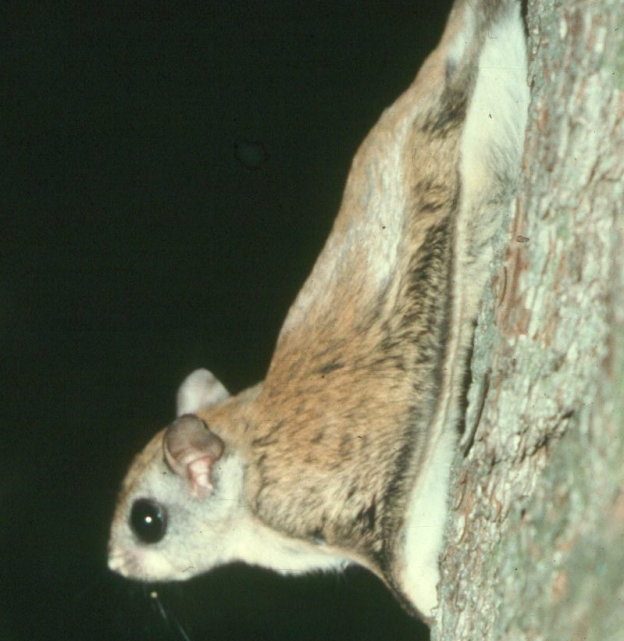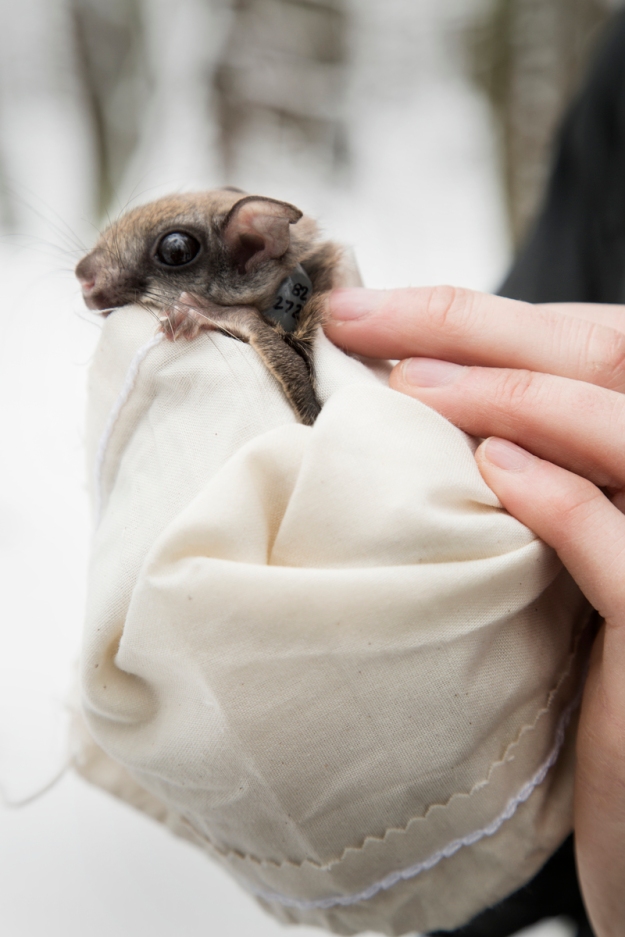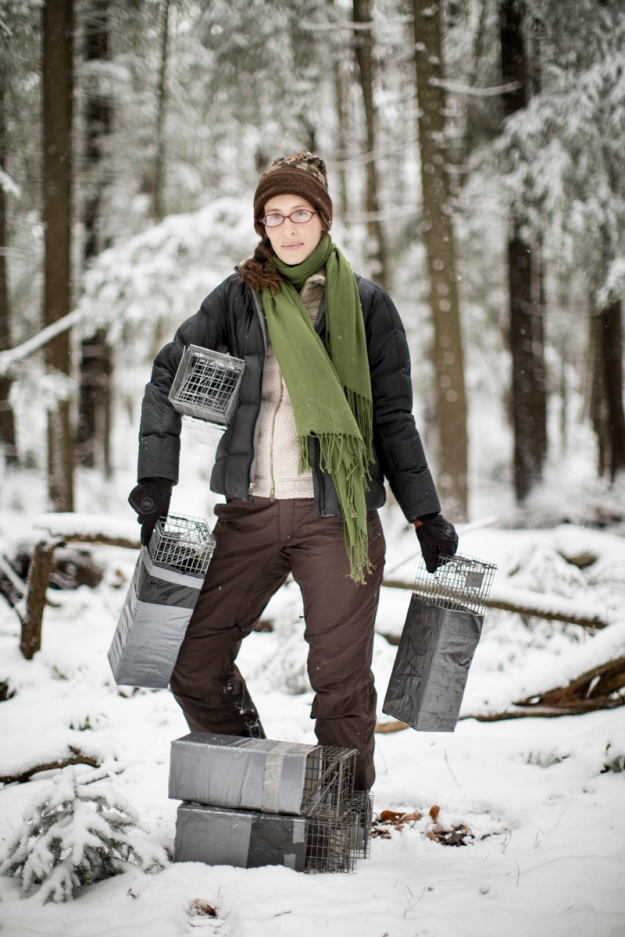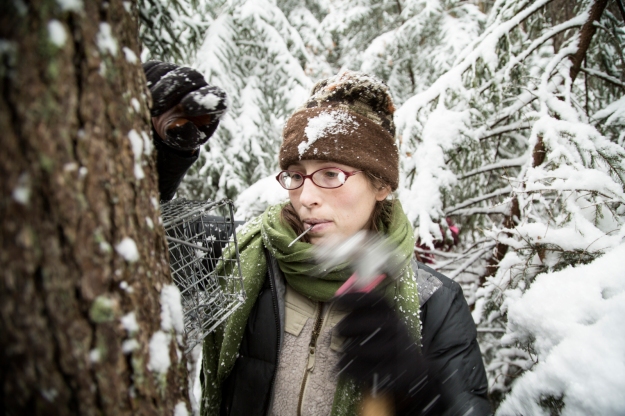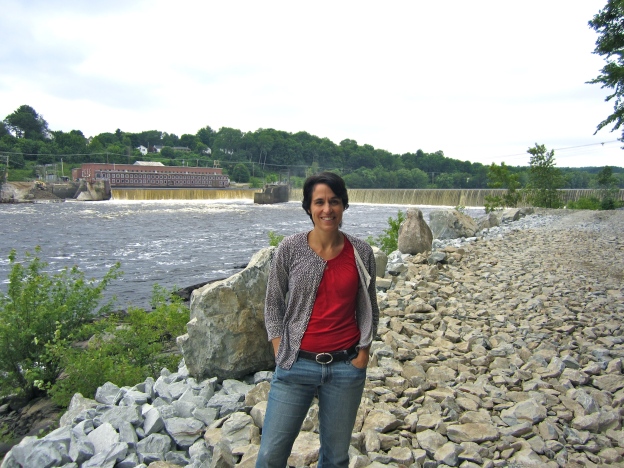By Lauri Munroe-Hultman
Don’t you hate it when you’re cruising along the Interstate and “Lane Closed Ahead” signs start popping up? Soon, a sea of brake lights appears, and traffic slows to a crawl, as cars squeeze through the narrowed roadway. Suddenly, getting where you want to go is much more difficult.
Perhaps this is how an Atlantic salmon feels when, making its way upstream to spawn, the waterway funnels to a small opening under a road. Its journey, one programmed into its DNA and necessary for the survival of the species, becomes many times harder than expected, if not impossible.

Undersized culverts like this one on a tributary to the Upper Sandy River in Phillips, Maine, hinder upstream migration of fish such as Atlantic salmon and Eastern brook trout and cause road washouts. Credit: USFWS
Maine’s aging roadways are littered with undersized culverts that prevent safe passage of fish and other animals and cause costly washouts during storms. Thanks to a recent grant from the Federal government, however, many outdated culverts will be replaced with wider archways that allow water and wildlife to pass more easily.
In December, the U.S. Department of Agriculture’s Natural Resources Conservation Service (NRCS) awarded $6 million to replace several hundred undersized culverts on private forestland in northern and eastern Maine and restore about 250 miles of waterway. The U.S. Fish and Wildlife Service is one of the principal partners in the five-year Maine Aquatic Connectivity Restoration Project that involves large forestland owners, tribal nations, conservation groups and local operators.
The project is the nation’s top-ranked funding agreement through the Regional Conservation Partnership Program (RCPP) administered by NRCS. It’s one of 88 high-impact projects across the country that will receive $225 million in Federal funding.
The Service worked with The Nature Conservancy (TNC) to set restoration priorities and draft the project proposal. The agency will contribute more than $1.3 million, and staff will help with surveys and assessments, engineering and conceptual designs, environmental compliance, fish removal, project management and monitoring activities.
In addition to the Service and TNC, project partners include Project SHARE, Maine Audubon, the Atlantic Salmon Federation, the Appalachian Mountain Club, the Penobscot Indian Nation, the Houlton Band of Maliseets and the Passamaquoddy Indian Nations. As a group, the partners have pledged to match or exceed the $6 million contribution to Maine’s infrastructure.
In a typical restoration, workers remove an old, rusted culvert, perhaps three-to-four feet in diameter, and replace it with a larger arch or bridge similar in width to upstream and downstream stretches. The resulting natural stream bed and water depth and flow let fish pass through easily. Other wildlife, such as beaver, mink, muskrats, turtles, snakes and frogs, can cross under the roadway via dry banks inside of the structure. The wider passageway can accommodate floodwaters, protecting the road during storms.
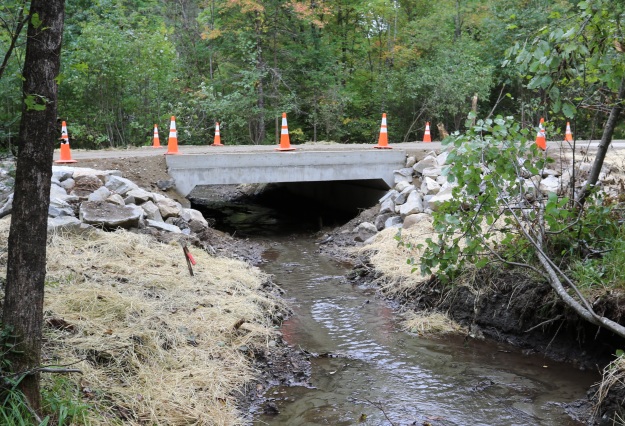
The completed project offers improved fish passage and increased protection against flooding. Credit: USFWS
The project will focus on waterways with some of the last endangered Atlantic salmon populations in the United States and critical Eastern brook trout habitat. Undersized culverts hinder the migration of these species, often keeping them from important spawning and rearing areas upstream.
While employing construction workers in the short-term, the project also will increase road stability and safety throughout Maine’s forestlands, supporting the forest industry, recreation and local economies. Healthy rivers and streams offer clean drinking water and enhanced sport fishing. Maine’s tribes will gain access to subsistence fishing, and downstream fisheries as far as the coast will benefit from improved water quality.

Service staff from the Gulf of Maine Coastal Program, Maine Field Office of Ecological Services and Moosehorn and Lake Umbagog national wildlife refuges worked together to remove the old culvert and replace it with a 12-foot-wide concrete arch. Credit: USFWS
Jed Wright, project leader of the Service’s Gulf of Maine Coastal Program, is excited to work with partners to increase the pace of restoring stream connectivity in Maine. “We’re committed to helping private landowners implement great projects by providing funding, conducting site surveys, designing replacement structures, and ensuring that construction will have minimal impact on fish and their habitats,” Wright said.
“With over 11 million acres of Maine forest in private hands,” added Kate Dempsey, state director of The Nature Conservancy in Maine, “this project stands ultimately to influence stream-friendly management on thousands of miles of some of the best aquatic habitat in the East and spur innovations and efficiencies to influence restoration even more broadly nationally as we and our partners share lessons from this project.”
And that means more waterways with smooth sailing for species traveling upstream. Now, if we could do something about those Interstate bottlenecks….
(Lauri Munroe-Hultman is a writer for the U.S. Fish and Wildlife Service in Hadley, Mass.)

